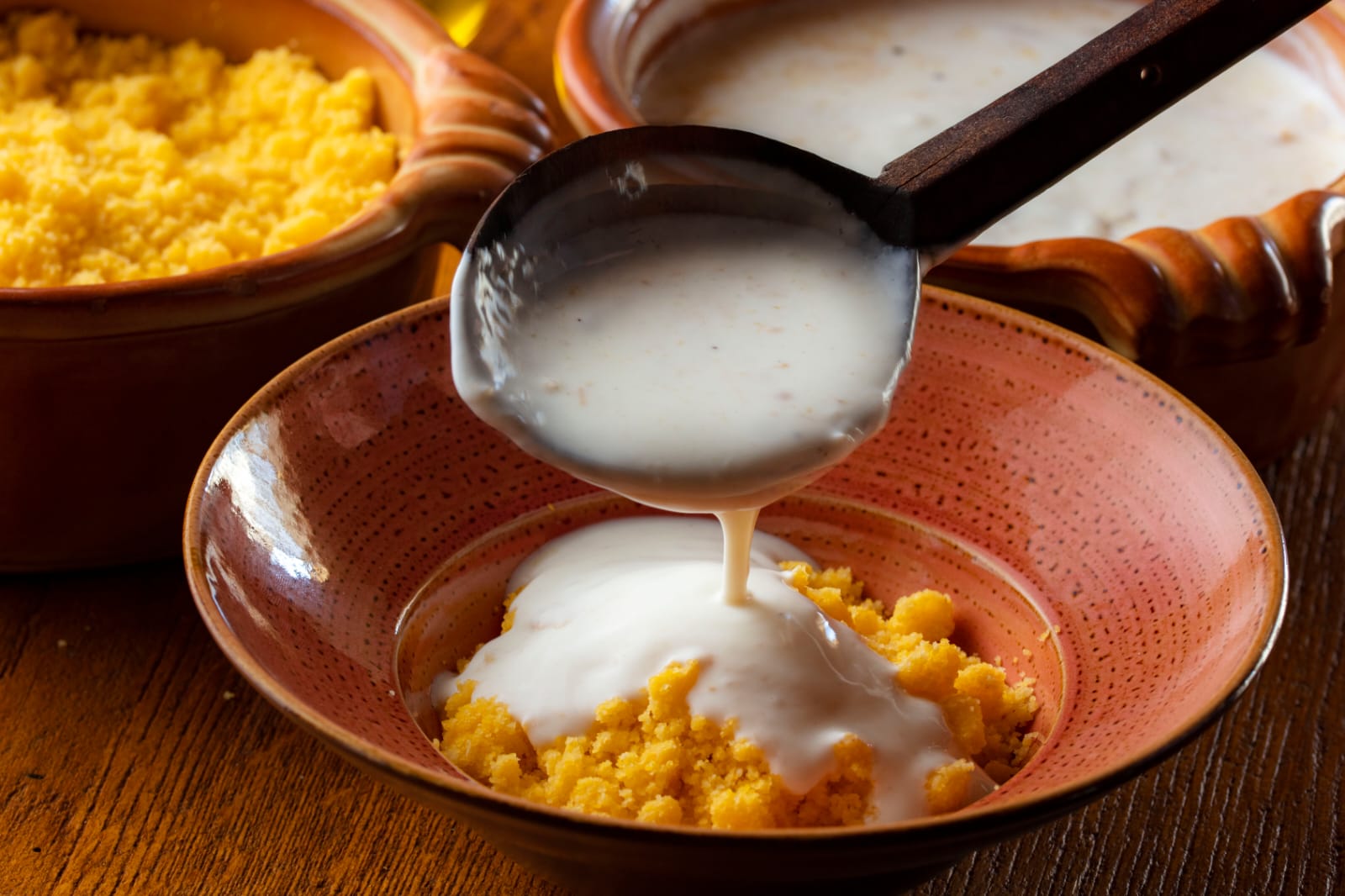

Pura
Ingredients (for 4 meals):
- 1 kg of pure corn flour
- 1 l of water
- salt
Archway:
- 250 g of butter
- 2 cloves of garlic
- 1 liter of sour milk
Preparation:
Turkey: Salt the water and let it boil. Then put the puree, cover with a lid and let it cook for a while. Reduce the lowest temperature and, with regular stirring, continue to cook until the mixture begins to separate from the bottom of the pan. Cover the container and leave it at a low temperature for half an hour, stirring every 10 minutes. The longer it is cooked, the grainier the pura becomes and gains in volume, but also intensity
taste. The cigar should be made well with a cooker.
Onions: In the meantime, you should clean the garlic (garlic) and crush it or make it with a pestle. Put the butter on the pan and caramelize it, after which let it rest. Mix the garlic into the previously caramelized butter (it is important that the butter is still warm), and then the sour milk until everything is soaked.
Interesting facts about the dish:
PURA is a word recorded since the 19th century. century in the regions where the Turks were. Its origin is unclear, and it is found in Dalmatia, Bosnia, etc. It is made from corn flour, so, like similar dishes, it is seasoned with cream or some other spice. Its second name, polenta, is a loanword from the Italian language. It used to be a typical heavy dish, a dish of the poor, and today, turkey has made its way onto the high gastronomic scene in a new guise. Traditional gristle with sour cream has been replaced by turkey/polenta chips, flavored turkey/polenta cakes with different herbs such as rosemary and thyme.
Pura in folk literature:
Sentences like “Love is not pure” and “You still have to eat pure” are sentences that grew up and lived with in Herzegovina. Love is not pure so that everyone has it. There is a saying: “You need to mix the cigar well, and they used to say that it is more difficult to make cigars with onions than to give birth!”.
The turkey is also sung in folk songs: “Give me mother onions and turkey and you will see girls by Christmas!”
Kitchen accessories for cigars:
For mixing the puree there was a special kitchen utensil called a musher/mixer. The mouse was made of wood, and you could buy them at fairs, and sometimes the host or one of the male members of the family would make the mouse. The world food atlas has listed the cigar as a delicacy. For World Food Day, HP Mostar issued a Pura lučnica stamp. And although turkey is cooked the same throughout Herzegovina, the way it is served is different.
Different from end to end…
In western Herzegovina, onion or porridge is eaten. Butter and dry meat (usually colorful bacon) are fried in a pan, then yogurt and garlic are added and this is how the turkey is seasoned. Porridge is made by pouring off part of the boiling mixture while cooking the turkey, adding garlic, and again to the pan in which the dry meat and butter were fried. In Prozor-Rama, pura is topped with butter or yogurt, or both
and others. Most often it was eaten alone, sometimes cracklings were also added. In Stolac, the first plate of turkey is eaten topped with butter and sprinkled with dry cheese, and the second with yogurt…





